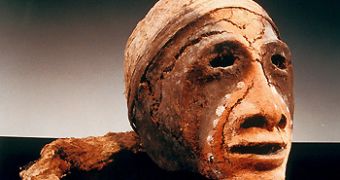Archaeologists have discovered in the Pacific islands of Vanuatu (New Hebrides) the region's oldest cemetery, 3,000 year old, filled with a huge amount of headless bodies.
The strange skeletons belong to the Lapita people, the earliest known sailors in the Pacific Islands. Their DNA could explain how many remote islands around Vanuatu were colonized. "Polynesia was first settled by the Lapita culture but their populations are somewhat different genetically and this has not yet been explained," said dig leader Matthew Spriggs, an archaeologist with the Australian National University. "The Vanuatu burials - which include mismatching bodies and heads of individuals from different corners of the Pacific Islands could help explain how everyone eventually ended up where they did," he said.
In several digging seasons, the researchers excavated 70 headless bodies, along with seven skulls and some rare pots, out of which 35 were recently found. "But rather than a ritual sacrifice or some other gruesome custom that might explain the separated heads and bodies, the deceased were all laid to rest initially with their skulls firmly attached," Spriggs said. "The head was believed to be the seat of the soul and so was often dug up after burial when the flesh had rotted away and kept either in skull shrines or in the house as a treasured memento of the person," he said.
He explained this by the fact that Vanuatu islands are famous for the cannibalistic habits of some of their tribes, practiced until the middle of the XX th century. What's even more puzzling is that none of the skulls matched the bodies with which they were buried, as analyses revealed. "Some curated heads, shiny through handling, had been placed on the chest of one individual some time after his burial - they may have been his descendants. Needless to say, he had no head either", said Spriggs.
Preliminary genetic investigation shows that many skulls and bodies might even have belonged to individuals from islands outside Vanuatu. "At present we don't have enough background data to enable us to say where someone came from in the Pacific, only that they didn't come from the island where they were found. Currently, 4 of about 18 individuals tested so far show signs of having been born elsewhere", said Spriggs.
All the investigations could explain how the Lapita people reached Vanuatu and the routes they took to colonize Polynesian archipelagos like Tonga, Samoa and Fiji. Lapita people are supposed to have started their journey from Southeast Asia, but in Vanuatu they encountered and mixed with a previous black Melanesian population. "It's a connect-the-dots picture that gets clearer with every new Lapita specimen that is found and tested. We are interested to know whether the DNA (that) we might be able to extract from the skeletons matches common Polynesian DNA patterns or is more like that of the people of Vanuatu today," said Spriggs.

 14 DAY TRIAL //
14 DAY TRIAL //